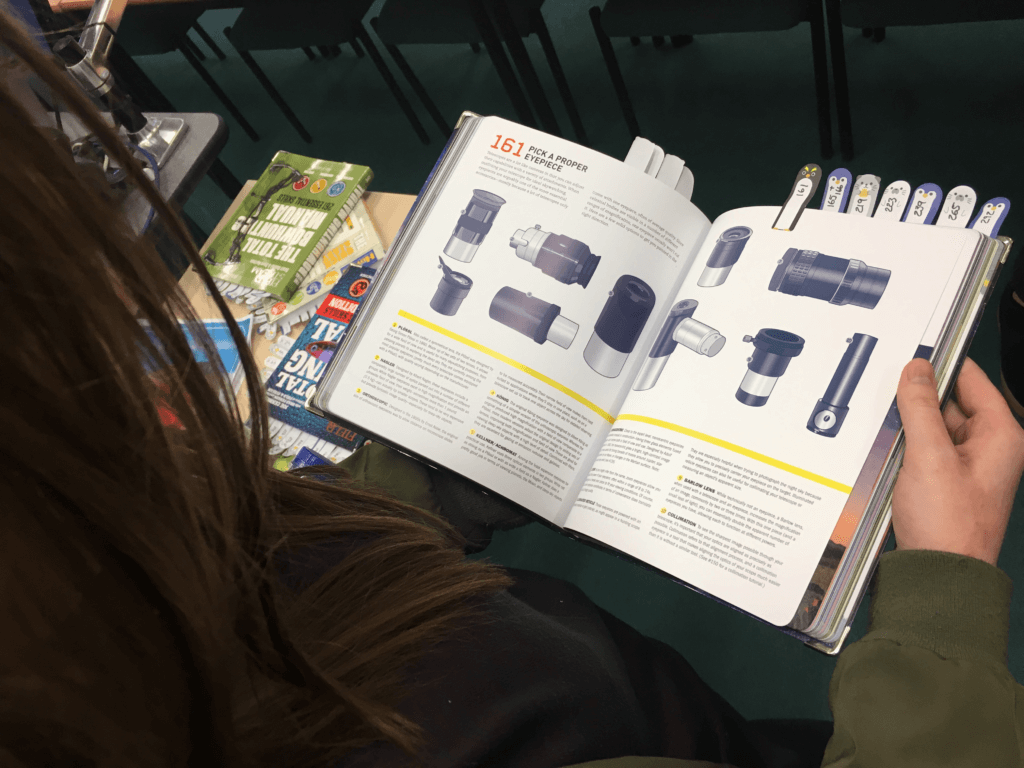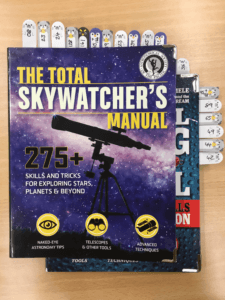The Baseline Shift event in Week 4 featured a talk from Lauren Towner. Alongside her full-time job in the Support Centre at the University, Lauren has worked as a freelance illustrator for the last 10 years. She came to speak with us about the experience of creating illustrations on-demand, on-brief and on-time, mainly a publisher specialising in ‘how-to’ manuals. This was great timing, as Part 1 students have very similar project coming up in the second half of this term. Through sharing her own experiences with her career in illustration from graduation up until present, we as budding graphic designers can get an insight into the processes involved in creative career paths and learn what to expect in our future endeavours.

Illustration explained – what do we need to know?
Lauren began with a helpful definition of what illustrators actually do, and why:
‘The goal of an illustrator is to visually represent an idea or concept through the use of visual information, such as drawings, found images or text.The resulting visual can be something purely decorative or something intended to communicate a message to an audience.’
It’s easy to see where design and illustration overlap, especially from a client perspective. Lauren noted that when she explains to people how she sees her role, they often respond with ‘oh, so you do graphic design? Lauren emphasised that she sees the difference between the two practices in the level of visual communication and the relationship between the image and the text. In essence, illustrators don’t have to factor in typography so much.
So, if this is a design course, why are we talking about illustration?
A subject Lauren regularly referred during the talk was experience with employment. Explaining how employers look for versatility when hiring creative professionals, she outlined the benefit to have illustration skills in your wheelhouse. A wider skill set means you can offer more to your employer so, if you’re a jack of both design trades, a lot of employers might be impressed. Some employers will simply assume that designers can ‘draw a bit’.
Typical briefs and style guides
Lauren then went on to cover what a ‘typical brief’ is like in her experience, as well as going into depth about the style guides that she is often asked to implement on her projects. It was interesting being asked to think about what this kind of guide might include, encouraging a us to see the parallels between the two disciplines – essentially, these are what we might think of as ‘brand guidelines’, but with a focus on illustrative style. Going through the process of a project from receiving the brief, the signing of contracts and their expected contents, completing the work itself and general guidance of the payments and rates, we really were fortunate to receive some insider’s knowledge to help influence our own development and decision-making.
Mentioned briefly within this topic was the difference a graphic designer can make to the final product. With reference to a specific an illustration she was particularly proud of, (a detailed technical illustration of a gun) she said that she was disappointed with the outcome, as the graphic designer had not finished the spread in such a way that put the illustration in its best light. She saw it as ‘…a good illustration ruined by bad graphic design’. This should act as a warning to us designers – your contribution makes a difference to other people’s work. Creative professionals have the work together, and with mutual respect, to provide the best outcome – so try to pull your weight and be sympathetic to the content you work with.
Working for exposure – yay or nay?
‘Your talent is an asset… you should be compensated for your efforts.’
Playing up what was discussed briefly in the previous section of the talk, we finished up the talk with a classic debate as to when, if ever, designers or illustrators should work for free. A range of opinions emerged, with some students clearly happy to work for nothing under some circumstances. Though the general consensus was that of course you shouldn’t under-sell yourself, the flip side of the argument was also discussed, in that perhaps when working for a non-profit charity, or doing an internship to ‘learn the ropes’ of the design world, or even for friends and family, then perhaps your generosity may come in to play.
‘You wouldn’t ask a plumber to come in and work for free and say ‘I’ll tell everyone that you’re a good plumber’…’ – Rowan Dicker, part 1 student
James Lloyd, our Part 1 tutor, made the point that that the Department is generally against the idea of designers ever working for free, as it can often lead to exploitation, and the imbalance in the designer/client relationship carries little educational benefit, as it is not representative of the real world of work. We should all think carefully before offering to work for free, or for favours.
Plagiarism is SERIOUS!
Worth a little snippet, Lauren also covered an age old lesson about the line between taking inspiration from someone else’s work and out-and-out copying. Talking from her experience of edging the line with plagiarism, she conveyed how uncomfortable she had felt when asked to use someone else’s work as a guide to a final destination, rather than as a jumping off point. The lesson – make damn sure you’ve done enough to make your designs your own and only submit what is technical, and morally, yours.

Final thoughts
On a personal level, this was one of the most useful Baseline Shift events that I have ever attended. Covering the nitty gritty of what we need to know, or what might resonate with us in our future careers, provides peace of mind to me, in that I know what to expect and what is in store. I have collated a set of quotes from the talk that could act as some useful life lessons – perhaps something for all of us to think about and reference to when making our own design decisions within upcoming projects:
‘Your natural style isn’t always the answer… you need to learn to be less precious with your work.’
‘Not every project you work on is going to be grand or glamorous… but you have to work on each project in the same way and ensure you give the best outcome.’
‘There is never one way to solve a problem.’
Lauren left us with the summarising statement that illustration, like all creative disciplines, is rewarding but challenging. Even so, nothings beats the thrill of seeing your work being used and published. It is a diverse path with plenty of opportunities, so make the most of it.
Finally, a great summary of the talk from a fellow Part 1 student:
‘It was really interesting to see someone from a different avenue of design. What I found really helpful was her views on always producing the best work possible and never selling yourself short. As a young designer I believe this to be very relevant as I have often been asked to produce work for free however hearing Lauren’s views consolidated that as designers we should always hold high regard for our own work and practices.’ – Giles Clark, part 1 student

